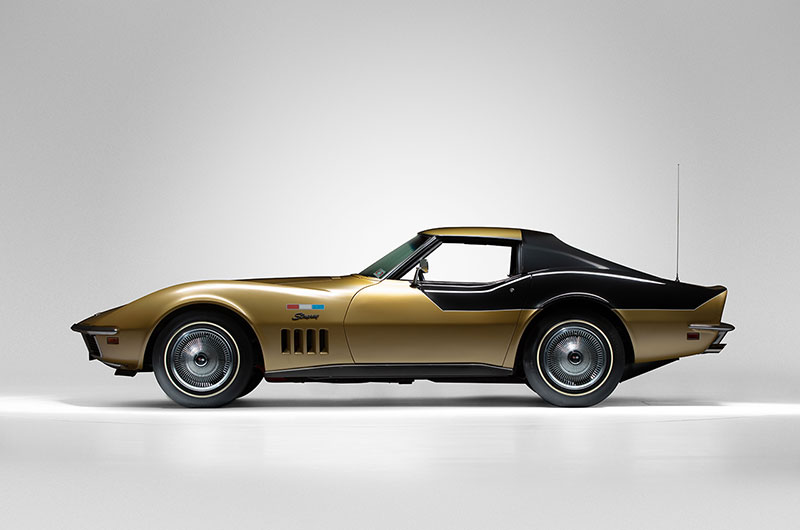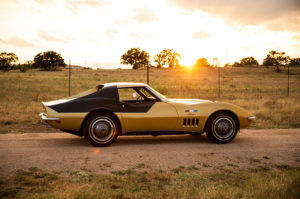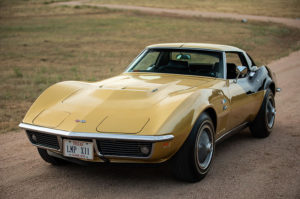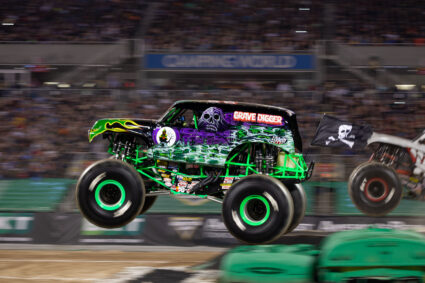
An Apollo astronaut’s classic car that was custom-styled after his spacecraft’s colors is set to land on the National Mall and in the Library of Congress ahead of the 50th anniversary of his mission to the moon.
The 1969 Chevrolet Corvette Stingray that was driven by Alan Bean, the fourth person to walk on the moon, is going on public display this week as part of the Historic Vehicle Association’s (HVA) 5th annual automotive heritage exhibition in Washington, DC. The display is in celebration of the distinctive gold and black coupe becoming the 25th automobile to be added to the National Historic Vehicle Register.
“Don’t miss your chance to see the Apollo 12 ‘Astrovette’ displayed on the National Mall at this year’s Cars at the Capital! The ‘Astrovette’ will be on display from Sept. 12-19th!” HVA promoted in an Instagram post.
As a member of NASA’s third group of spaceflight trainees selected in 1963, Bean benefited from an existing agreement between the astronauts and General Motors that leased them new Corvettes for just $1 per year. Bean and his Apollo 12 crewmates, Charles “Pete” Conrad and Richard “Dick” Gordon, chose Riverside Gold Corvettes with custom-painted black accent “wings” that evoked the colors of the Apollo lunar module.
“The iconic black over gold design of the ‘Astrovette’ was created by legendary automotive designer Alex Tremulis, with input from the Apollo 12 astronauts. Tremulis proposed three different sketches for the trio of Corvettes, which the Apollo 12 crew used to come up with the final pattern to be put on their matching cars,” HVA explained in a social media post.
The three Apollo 12 Corvettes were identical except for one detail.
“The red, white, and blue stickers on each fender were used to identify which Corvette belonged to which astronaut, with the color corresponding to their assigned colors for food packaging aboard the space capsule,” wrote HVA. “Alan Bean’s color was blue and he was the Lunar Module Pilot, thus the ‘LMP’ on the blue section of the sticker.”
Bean and his crewmates picked up their custom coupes from former Indy 500 winner Jim Rathmann, who ran a Chevrolet dealership in Melbourne, Florida, and then drove them back to NASA’s Manned Spacecraft Center (now Johnson Space Center) in Houston. The three astronauts also posed for photos with the cars for the pages of LIFE magazine.
“I had a lot of fun in this car a long time ago,” said Bean in a 2009 documentary (“James May on the Moon,” BBC). “When we went to work, we’d park them side by side, they’d look great.”
Bean, Conrad and Gordon launched to the moon on Nov. 14, 1969. Five days later, Bean and Conrad made history as the second crew to touch down on the lunar surface, landing at the Ocean of Storms on the lunar module Intrepid. The trio returned to Earth aboard the command module Yankee Clipper, splashing down on Nov. 24, 1969.
Bean died in May 2018. He was preceded in death by Conrad in 1999 and Gordon in 2017. The fates of Conrad’s and Gordon’s AstroVettes are unknown but they may have been destroyed. Bean’s was bought by an enthusiast, Danny Reed, for $3,230, after he spotted it on a General Motors Acceptance Corporation (GMAC) lot in his hometown of Austin, Texas in 1971.
Reed has loaned the car to HVA for its Cars at the Capital display. The association will host a “lighting ceremony” for the car’s glass enclosure on the National Mall hardscape between the National Air and Space Museum and the National Gallery of Art at sundown (approximately 7:30 p.m. EDT) on Wednesday (Sept. 11).
Bean’s Corvette will be on display from Thursday (Sept. 12) through Sept. 19 on the National Mall. HVA will host “Cars at the Capital and Coffee,” featuring both Bean’s AstroVette and the 1966 Volkswagen Deluxe Station Wagon owned by civil rights leaders Esau and Janie B. Jenkins on Saturday from 7:30 a.m. until noon.
The National Historic Vehicle Register documents the United States’ most historically significant automobiles, motorcycles, trucks and commercial vehicles in an archive held by the Library of Congress. Entrants in the register are chosen based on four criteria, including their association with an event or person important to U.S. history, their distinctive design or their status as the first or last remaining example of a particular type of vehicle.




